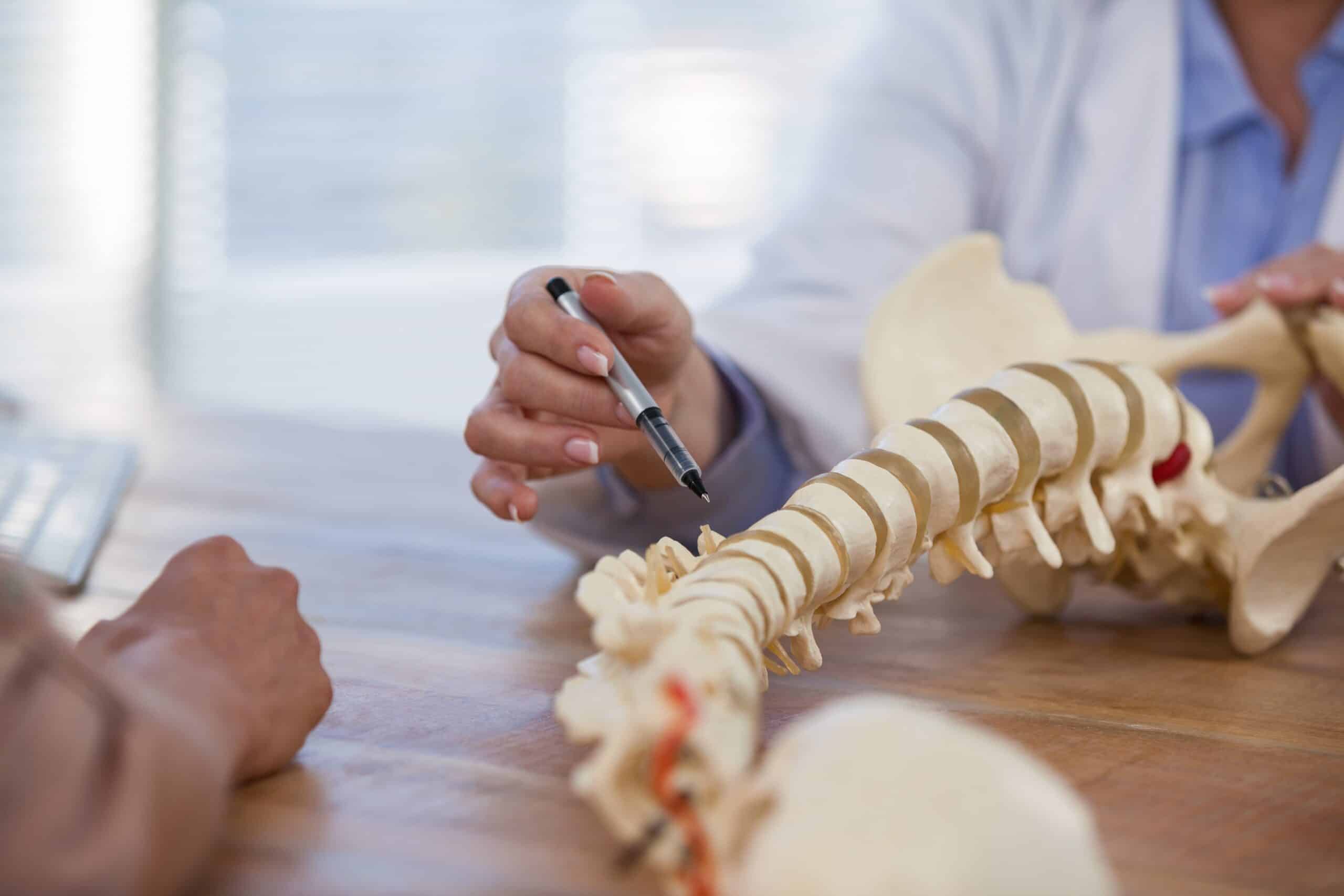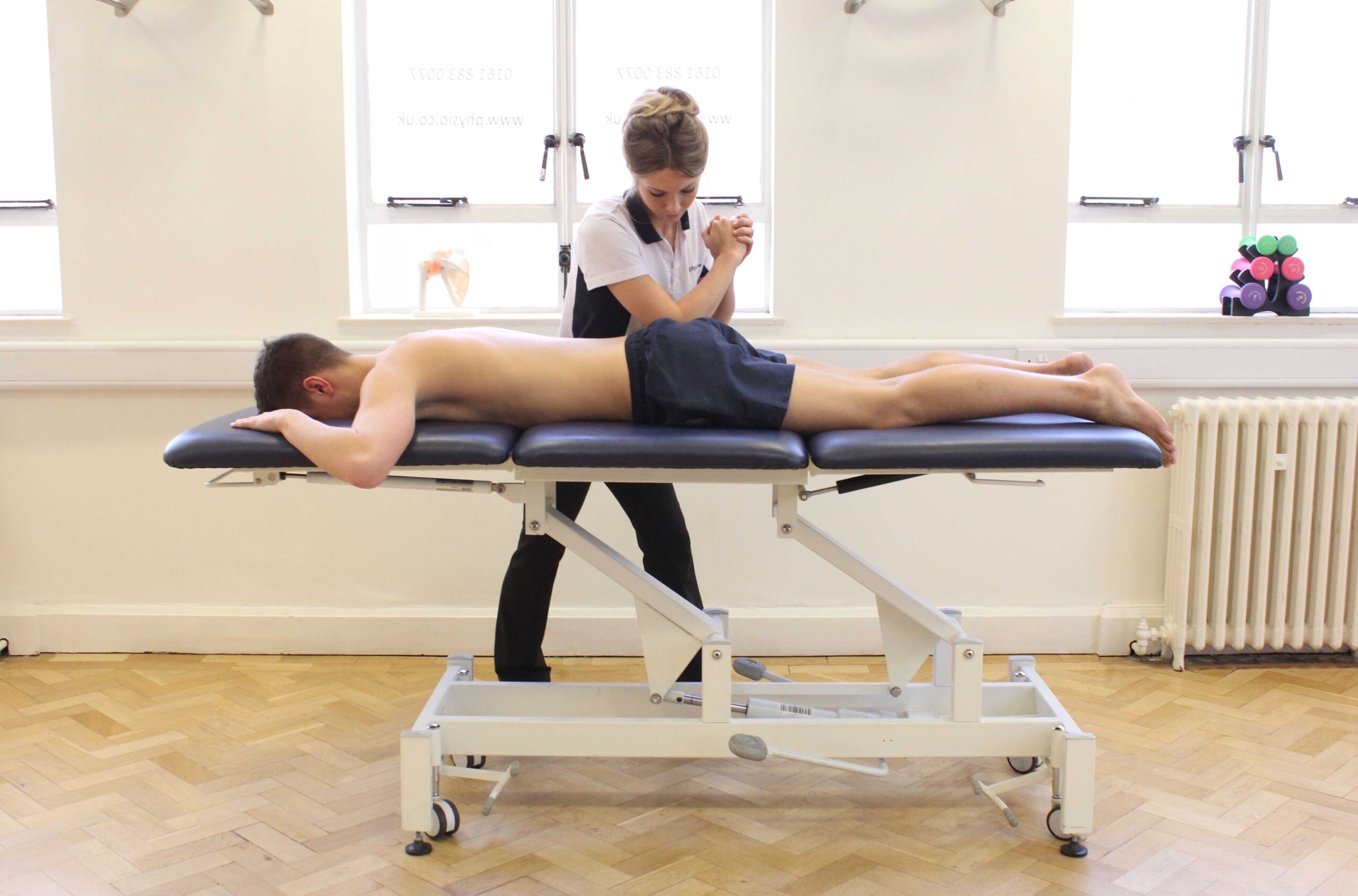Lumbar spine surgery, a complex medical intervention targeting the lower back, is an intriguing subject that encompasses a wide range of techniques and strategies. It is a field that calls for deep understanding, given its potential to transform lives by alleviating chronic pain and enhancing mobility. However, the decision to undergo such a surgical procedure is not one to be taken lightly, as it involves numerous considerations including the risk-benefit equation, insurance implications, and postoperative recovery. Hence, it is paramount to examine the intricacies of lumbar spine surgery and discuss its implications in a broader healthcare context.
Understanding Lumbar Spine Surgery
What exactly comprises lumbar spine surgery, one might inquire? Lumbar spine surgery is a medical procedure focused on diagnosing and treating lower back problems, primarily those affecting the five vertebrae in the lower spine. The goal of such surgery can range from relieving chronic pain, correcting congenital spinal problems, to restoring functionality.
Lumbar spine surgery encompasses a range of procedures, including discectomy, laminectomy, fusion surgeries, and artificial disc replacement, among others. Each of these procedures has distinct goals and outcomes, necessitating an individualized approach based on patient needs and conditions.
Surgery alternatives often include physical therapies, medications, and lifestyle modifications. These alternatives, though less invasive, may not always be suitable, particularly in cases of severe spinal damage or persistent, debilitating pain. It’s important for patients and doctors to weigh the potential benefits and risks of both surgical and non-surgical interventions.
Insurance considerations are essential in the decision-making process. The cost of lumbar spine surgery can be significant, and insurance coverage varies widely. Patients should discuss their insurance plans with healthcare providers and insurance companies to understand the financial implications of their surgical options. This can ensure that the chosen treatment plan is both medically appropriate and financially feasible.
Anatomy of the Lumbar Spine
The lumbar spine, a complex structure located in the lower back, is comprised of various elements critical to its function. Central to its design are the vertebrae and intervertebral discs, constituents that play a pivotal role in the spine’s overall operation. In the following sections, we will investigate the basic structure of the lumbar spine, provide an in-depth analysis of the vertebrae and discs, and outline their contributions to the functionality of the lumbar spine.
Lumbar Spine Structure Basics
Understanding the anatomy of the lumbar spine requires a detailed exploration into its complex structure, which serves as the vital scaffolding of the lower back.
- The lumbar spine, consisting of five vertebrae, is distinctive for its lordotic curve, a convex curve forward known as the spinal curvature, which plays a pivotal role in balancing the body’s weight.
- The lumbar region houses the cauda equina, a collection of nerve roots that descend from the spinal cord, forming an integral component of the nerve pathways. These nerve roots transmit messages between the brain and the lower part of the body.
- The lumbar spine features facet joints that allow for motion, and ligaments that provide stability. These characteristics enhance its functionality, making it an essential component of the human skeletal system.
Vertebrae and Intervertebral Discs
Delving into the anatomy of the lumbar spine, attention must first be drawn to the vertebrae and intervertebral discs, critical components that collectively contribute to the spine’s overall function and structure. The vertebrae undergo various developmental stages, evolving from cartilaginous structures in the fetus to fully ossified bones in adulthood. These bones provide an articulated yet sturdy support system for the body. Between each vertebrae, intervertebral discs serve a dual role: acting as shock absorbers and allowing subtle movements. Disc degeneration causes can be multifactorial, including age, genetics, and lifestyle factors. When degeneration occurs, it can compromise the disc’s integrity, leading to conditions such as disc herniation or stenosis, thereby causing potential pain and disability.
Lumbar Spine Function Overview
In the intricate architecture of the human body, the lumbar spine plays a pivotal role, functioning as the central pillar of support and facilitating a range of movements while also housing critical elements of the nervous system.
- Spinal Flexibility: The lumbar spine is responsible for much of the flexibility in the back, allowing for bending and twisting.
- Structural Support: As the largest portion of the vertebral column, it bears the weight of the body, providing stability and balance.
- Nerve Control: The spinal cord, which runs through the lumbar spine, is the main pathway for nerve messages, ensuring communication between the brain and the rest of the body.
Understanding the multifaceted function of the lumbar spine is vital for evaluating the impact of spinal conditions, as well as planning effective surgical interventions.
Common Lumbar Spine Problems
Several lumbar spine problems are common, particularly including herniated discs, spinal stenosis, and degenerative disc disease, each of which can greatly impact an individual’s quality of life.
Spinal stenosis is a condition where the spinal canal narrows and compresses the nerves, often resulting in pain or numbness in the legs. Spinal stenosis causes can include aging, arthritis, heredity, or spinal injuries. Symptoms tend to worsen over time, and while conservative treatments can help manage the condition, severe cases may necessitate surgery.
Degenerative disc disease, on the other hand, is not actually a disease but a term used to describe the normal changes in spinal discs as a person ages. This condition can lead to lower back or neck pain as the discs lose their ability to act as shock absorbers between the vertebrae. In some cases, an injured disc can cause chronic pain.
Both conditions are common causes of discomfort and can limit an individual’s mobility and daily activities. Understanding these lumbar spine problems is essential in the management and potential surgical interventions to restore the quality of life.
Indications for Lumbar Spine Surgery
When it comes to lumbar spine surgery, there are specific indications that may lead healthcare professionals to recommend this invasive, yet often effective, treatment option. It is generally considered when non-surgical treatments have failed to alleviate the symptoms, or when the patient’s quality of life is greatly impacted by their condition.
- Persistent Pain: One of the primary indications for lumbar spine surgery is persistent, crippling back pain that does not respond to conservative treatments like physical therapy, medication, or injections – the common surgery alternatives.
- Neurological Symptoms: The development of neurological symptoms such as numbness, weakness or tingling in the extremities can indicate severe nerve compression. In such cases, surgical intervention might be necessary to avert permanent damage.
- Patient Eligibility: Not everyone is a candidate for lumbar spine surgery. Patient eligibility is determined by a number of factors including the specific diagnosis, the patient’s overall health, age, and the likelihood of improvement with surgery.
Types of Lumbar Spine Surgery
In the domain of lumbar spine surgery, there are several common procedures performed to alleviate pain and improve function. Each procedure carries its own set of risks that must be carefully evaluated before deciding on a course of action. Following surgery, the post-operative recovery process plays a vital role in achieving best outcomes and restoring spinal health.
Common Lumbar Surgery Procedures
There exists a variety of lumbar spine surgery procedures, each designed to address specific conditions and symptoms afflicting the lower back. These procedures range from minimally invasive surgeries to complex operations, each with their unique advantages and disadvantages.
- Lumbar Discectomy: This procedure involves removing a portion of the disc that is putting pressure on the nerve. It’s often recommended as a surgical alternative when conservative treatments don’t provide relief.
- Lumbar Laminectomy: This procedure involves the removal of the entire lamina, a bone that covers the spinal canal, to relieve nerve pressure.
- Spinal Fusion: This procedure is used to permanently connect two or more vertebrae in the spine, eliminating motion between them.
Insurance coverage varies widely depending on the procedure and individual policy. Always consult with your provider for detailed coverage options.
Lumbar Surgery Risks
Despite the potential benefits of lumbar surgery, it is crucial to understand that every surgical procedure carries inherent risks and potential complications. Among these, the risk of infection is substantial, necessitating stringent infection prevention measures during and after the procedure. Antibiotics are commonly administered, and sterile techniques employed to minimize this risk. Another critical aspect is maintaining a healthy post-surgery lifestyle, which can greatly impact the outcome of the surgery and mitigate other risks such as blood clots, pulmonary complications, and persistent pain. It’s essential for patients to follow their surgeon’s advice regarding activity levels, nutrition, and medication adherence. While lumbar surgery can improve quality of life, understanding and preparing for these risks is an essential part of the surgical journey.
Post-Operative Recovery Process
Following a lumbar spine surgery, the post-operative recovery process plays a pivotal role in determining the overall success of the procedure and the patient’s return to a normal and active life. This process involves several key aspects that contribute to effective healing.
- Dietary Changes: Post-surgery, it is important to adhere to a nutritious diet. Consuming protein-rich foods aids in the healing of tissues and bones, while hydration helps prevent constipation, a common post-surgery issue.
- Physical Activity: Gentle exercises, as recommended by a healthcare provider, can expedite recovery, strengthen the back muscles, and enhance flexibility.
- Emotional Health: Psychological well-being has a significant impact on the recovery. Support from family, friends, and professional therapists can help manage stress and maintain a positive mindset during the recovery period.
Each of these factors can greatly influence the outcome of lumbar spine surgery.
Preparing for Your Surgery
Proper preparation for your lumbar spine surgery plays a significant role in ensuring smoother proceedings and a more successful outcome. This preparation includes both physical and emotional readiness, as well as a thorough understanding of surgery alternatives.
Before opting for surgery, it is essential to explore all potential alternatives. Non-surgical options such as physical therapy, chiropractic treatments, and pain management strategies can often provide relief without the need for invasive procedures. However, if these alternatives are ineffective or if your condition is severe, surgery may be the best course of action.
The emotional readiness for spine surgery is equally significant. It involves understanding the procedure, potential risks, and expected recovery process. It also means coming to terms with the need for surgery and the impact it will have on your life. Having a strong support system in place is beneficial for emotional preparation.
It’s also essential to prepare physically for surgery. This can involve prehabilitation exercises to strengthen your body, adopting a healthy diet, and ceasing habits such as smoking that could complicate the surgical process or recovery.
The Surgical Procedure: What to Expect
After making the necessary preparations for your lumbar spine surgery, it’s crucial to understand the specific steps and procedures you can expect during the operation itself.
The surgical procedure generally involves three main steps:
- Incision and Access: The surgeon creates a small incision in your lower back, moving the muscles aside to reach the spine. This part of the procedure is done with the utmost precision to minimize tissue damage.
- Disc Removal and Spinal Fusion: The problematic disc is removed and replaced with a bone graft. Over time, this graft will fuse with the adjacent vertebrae, providing stability and relief from pain.
- Closure: The surgical site is then closed using sutures or staples.
While the above outlines a typical surgical procedure, it is important to note that surgery alternatives may be recommended based on your specific condition. These could include physical therapy, pain management techniques, or minimally invasive procedures.
Patient experiences during the procedure can vary. However, knowing the general steps can help alleviate anxiety and promote a smoother recovery. Remember, your medical team is there to assist you throughout the process and ensure your comfort and safety.
Risks and Complications of Surgery
Despite the meticulous precision employed during lumbar spine surgery, it is important to be aware of potential risks and complications that may arise. These can range from minor, such as infection or extended recovery time, to more severe complications like nerve damage, blood clots, or spinal fluid leaks. Factors such as the patient’s age, overall health, and the complexity of the surgery can also influence the risk of complications.
In light of these risks, consideration of surgical alternatives is prudent. Non-surgical treatments such as physical therapy, pain management techniques, or even minimally invasive procedures might be viable options depending on the patient’s condition. These alternatives should be thoroughly discussed with the healthcare provider before making a decision.
Insurance considerations are also integral in the decision-making process. Patients should confirm insurance coverage for the procedure, considering not only the surgical costs but also the potential costs of post-surgery complications. It is advisable to discuss this with the insurance company or a hospital financial counselor to understand the financial implications fully.
Postoperative Care and Recovery
Following lumbar spine surgery, the process of postoperative care and recovery plays a pivotal role in the patient’s journey towards regaining peak functionality. This phase primarily encompasses pain management strategies and the implementation of a tailored physiotherapy plan. In the forthcoming discussion, we will explore these aspects in detail, highlighting their importance and potential impact on the patient’s long-term recovery.
Pain Management Post-Surgery
Effective management of postoperative pain, a critical component in the recovery process, plays a significant role in enhancing patient comfort and facilitating early mobilization after lumbar spine surgery.
- Opioids, nonsteroidal anti-inflammatory drugs (NSAIDs), and other pain relievers are commonly used to alleviate acute postoperative pain. These medications, while effective, may present side effects such as nausea, constipation, and dependency risks.
- Alternative therapies, including acupuncture and massage, have shown promise in mitigating discomfort, reducing the need for pharmacological interventions.
- Mindfulness approaches, such as meditation and relaxation techniques, can help patients better manage their pain perceptions, leading to improved recovery outcomes.
Optimal pain management strategies typically involve a combination of these approaches, tailored to the individual patient’s needs and responses.
Rehabilitation and Physiotherapy
A patient’s journey towards recovery after lumbar spine surgery is greatly facilitated by a well-structured regimen of rehabilitation and physiotherapy, which aims to restore function, improve mobility, and reduce pain. An integral part of this process is a rehabilitation diet, tailored to meet the nutritional needs of the patient, fostering healing, and improving overall wellbeing. Adequate protein, vitamins, and minerals are essential to support the healing process, and a dietitian can assist in creating an ideal dietary plan.
The emotional aspect of recovery should not be underestimated. Emotional support, whether through counselling, support groups, or loved ones, is invaluable in managing the stress and anxiety that may accompany the rehabilitation process. This holistic approach, addressing both physical and emotional needs, can greatly enhance recovery outcomes.
Physical Therapy and Rehabilitation
Often an integral part of recovery after lumbar spine surgery, physical therapy and rehabilitation aim to strengthen the body, enhance flexibility, and promote peak functioning. The focus is on helping patients regain their mobility and return to daily activities, while minimizing pain and discomfort.
Physical therapy encompasses two main aspects: Therapeutic Exercises and the use of Adaptive Equipment.
- Therapeutic Exercises: These are customized to the patient’s individual needs and progress. Exercises often focus on improving flexibility, building strength, and enhancing endurance. They may include stretching, strengthening exercises, and low-impact cardio activities. The goal is to fortify muscles supporting the spine, which can help stabilize the lumbar region and prevent future injury.
- Adaptive Equipment: This includes tools that assist in mobility and daily activities, such as walkers, canes, or wheelchairs. Additionally, specialized equipment, such as lumbar rolls and ergonomic seating, can help maintain proper spinal alignment and mitigate pain.
- Patient Education: This involves teaching patients about proper body mechanics, posture control, and strategies to prevent re-injury. It’s vital as it empowers patients to actively participate in their recovery and promotes long-term wellness.
Long-Term Prognosis After Surgery
Building on the foundation of physical therapy and rehabilitation, it is important to take into account the long-term prognosis following lumbar spine surgery. This involves evaluating the patient’s future quality of life, physical abilities, and potential for pain relief, which are all pivotal to surgical decision-making.
The long-term prognosis can vary widely, dependent on factors such as the patient’s health status, type of surgery, and adherence to post-operative care. For some, surgery brings substantial relief and improved functionality. However, it’s important to acknowledge that surgery alternatives, such as non-surgical treatments and lifestyle modifications, may offer a better prognosis for others.
The psychological impact of lumbar spine surgery is another essential component of the prognosis. Chronic pain, limited mobility, and lengthy recovery periods can lead to mental health concerns such as depression and anxiety. Therefore, psychological support should be a part of the care continuum.
Lastly, it’s important to remember that each patient’s case is unique. While statistical data can provide general expectations, individual prognosis may differ. Therefore, a thorough evaluation of the patient’s condition and careful consideration of all treatment options is crucial to make the best decision for the patient’s long-term health.
Real-life Lumbar Spine Surgery Success Stories
To further explore the potential outcomes of lumbar spine surgery, let’s examine a few real-life success stories of individuals who have undergone the procedure.
- Case One – John: A 52-year-old mechanic, John suffered from chronic lower back pain due to disc degeneration. He opted for lumbar spine surgery after exhausting conservative treatment options. Post-surgery, John reported a notable reduction in pain and was back to work within a few months, illustrating a positive patient experience.
- Case Two – Emily: Emily, a 37-year-old teacher, was diagnosed with a lumbar herniated disc. She considered surgery alternatives before deciding on a minimally invasive lumbar discectomy. Emily’s recovery was swift, and she was able to return to her active lifestyle, showcasing the effectiveness of less invasive surgical options.
- Case Three – Robert: Robert, a retired military officer, struggled with spinal stenosis. He underwent a lumbar decompression surgery. His mobility improved remarkably post-surgery, and he was able to engage in activities he previously couldn’t, demonstrating the transformative potential of lumbar spine surgery.
These real-life stories highlight the diversity of patient experiences and the potential for lumbar spine surgery to improve quality of life when other treatment alternatives have been ineffective.
Frequently Asked Questions
What Is the Average Cost of Lumbar Spine Surgery?
The cost of such a procedure varies greatly, influenced by factors such as surgical approach, geographical location, and insurance coverage. Additionally, post-surgery rehabilitation and potential lumbar surgery risks can further impact the overall expense.
How Does Lumbar Spine Surgery Impact Mental Health?
Surgical procedures can greatly affect mental health, with factors like preoperative anxiety and emotional healing post-surgery playing important roles. Proper management of these aspects is essential for a holistic recovery process.
What Are the Breakthroughs in Lumbar Spine Surgery in Recent Years?
Recent breakthroughs have focused on the evolution of surgical techniques and improved postoperative rehabilitation methods. These advancements have greatly enhanced recovery rates and functional outcome, reducing complications and hospitalization period for patients.
Can Lumbar Spine Surgery Be Performed in Outpatient Settings?
Yes, certain surgical procedures can be performed in outpatient settings, offering effective surgery alternatives. The recovery process is often faster, with patients typically returning home the same day, enhancing comfort and reducing hospitalization costs.
Does Insurance Typically Cover Lumbar Spine Surgery?
Typically, insurance does cover such procedures, however, limitations may exist depending on the policy. It is important to undergo a pre-approval process to guarantee coverage and avoid unexpected out-of-pocket expenses.



